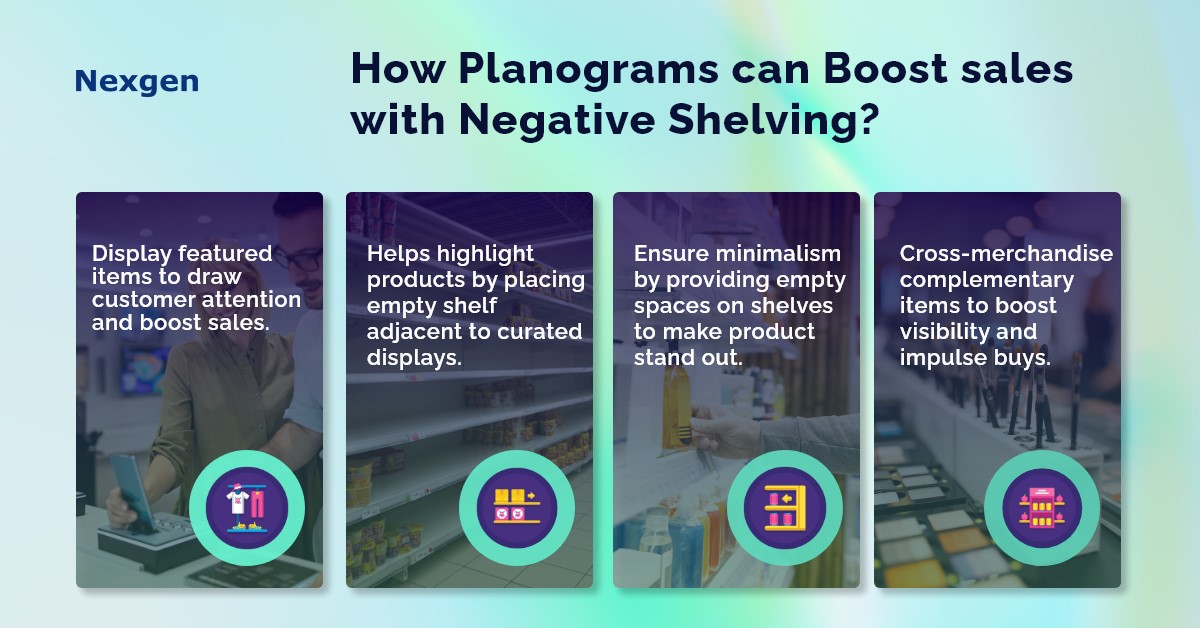As you have noticed, most retail stores have less stock on their shelves nowadays. But have stores taken inventory reduction too far? Recent studies in the U.S. indicate that there has been a decline in product inventory for the past few years to help shoppers choose the right items with minimal stock. The study emphasizes that negative shelving is not a one size fits all decision; it is influenced by the size of the store and demand variability. While small stores experience a reduction in efficiency when increasing the number of empty shelves in stores. Therefore, it is best to opt for this idea in large stores because they have the resources to keep up with consumer demand and market trends that small retailers often lack, if they want to boost efficiency.
Every inch of space within a store is planned and curated to create an impactful shopping experience. From product placement to lighting and signage, every detail is strategically designed to create an immersive shopping experience. One design tactic that is known for its ability to transform store aesthetics is negative shelving, strategically integrated into planograms.
How Planograms can Boost Sales with Negative Shelving?
Negative shelving involves intentionally leaving some shelves partially or completely empty within a retail space. Effective implementation of negative shelving through planograms requires a deep understanding of store layout, product placement, and shopper behavior. It is a process that balances product availability with visual appeal. By creating gaps amongst stocked shelves, negative shelving can impact the visual appeal of a store, enhancing the overall shopping experience. Following are some planogram in retail ideas to boost sales with negative shelving:

- Creating a sense of elegance: Empty spaces, when thoughtfully placed, can elevate the aesthetics of a store. Just as a well-composed painting incorporates negative space to enhance the focal point, negative shelving contributes to an elegant and balanced atmosphere. Empty shelves captivate the eye, drawing attention to featured products and giving customers room to appreciate the store's design. For instance, in a high-end jewelry store, retailers can use empty display areas for placing necklaces and bracelets. These empty spaces act as graceful pauses, allowing the store to gain customer attention.
- Highlighting product importance: Strategically employing negative shelving can shine a spotlight on specific products or collections. By placing an empty shelf adjacent to a carefully curated display, retailers can guide the shopper's gaze to the products they want to highlight. Imagine a bookstore preparing for the release of a highly anticipated novel. To highlight its importance, planogram designers can strategically leave an empty shelf at the front of the store, surrounded by bestselling titles. This will generate curiosity, since customers approach the empty shelf, their attention is naturally drawn to the upcoming novel's promotion.
- Infusing minimalism and simplicity: The allure of minimalism lies in its ability to convey sophistication through simplicity. Negative shelving seamlessly aligns with this design, allowing products to stand out. Consider a cosmetics store planning to showcase a new skincare line. By strategically leaving empty spaces around the minimalist product displays, the store creates an inviting atmosphere to attract customer attention. This minimalist approach can resonate particularly well with modern consumers, who value clean lines and uncluttered spaces.
- Guiding the shopping flow: Negative shelving serves as a visual guide, directing shoppers along a predetermined path. As customers move through the store, strategically placed empty spaces create natural breaks, encouraging visitors to pause and engage with the environment. Imagine a grocery store aiming to enhance the shopping experience for health-conscious customers. Within the planogram, empty shelves are strategically placed in each corner of the store, forming a path that guides shoppers from fresh produce to organic snacks and finally to wellness supplements. This guided shopping flow enhances the overall experience, enabling retailers to boost sales.
- Fostering emotional engagement: Beyond its visual impact, negative shelving triggers emotional responses. The gaps and voids created by these empty spaces evoke curiosity, prompting customers to explore further. Consider a home decor store, planning to evoke a cozy atmosphere. Within the planogram, empty shelves are strategically placed around a curated display of plush cushions and throws. This will create a sense of comfort, inviting customers to imagine the products within their own living spaces.
Overview of Nexgen POG
Nexgen POG is a robust and user-friendly cloud-based visual merchandising tool. It is designed for quick and efficient planogramming with minimal effort. Planogram in retail can be designed by easily dragging and dropping the products. The multi-device compatibility feature of POG allows you to obtain, share and edit planogram on any device, including your phone. It helps in designing store-specific planograms for increased product visibility and sales.
Get Your Free Trial Now!